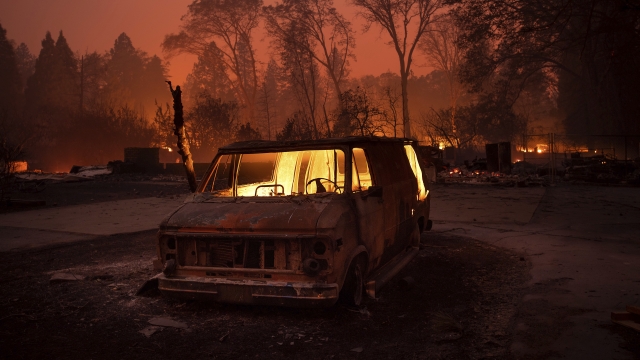The deadly wildfires in Hawaii have become the latest disaster identified by the Scripps News investigative team in which outdoor emergency sirens designed to warn people in imminent danger never sounded.
While evacuation notices were sent to cellphones, television and radio, no one activated Hawaii’s extensive outdoor emergency warning sirens during the outbreak of wildfires last week, said Adam Weintraub, spokesman for the Hawaii Emergency Management Agency.
He said the speed of the fire may have left too little time to consider sounding the sirens, but that it is not yet clear why the alarms weren't used.
"The immediate priority is that medical needs are met, and that we’re able to conduct search and rescue," Weintraub said during a telephone interview Monday.
Hawaii's sirens are one of the biggest outdoor warning systems in the country.
There are more than 400 sirens across the state, many installed after the 2011 tsunami in Japan.
According to a Scripps News analysis of siren data plotted on a map by the County of Maui, on average the alarms blast at more than 115 decibels. That’s roughly the same volume as on the floor of a very loud rock concert, or standing 100 yards away from a jet plane taking off. When outside, people can hear it from over seven football field lengths away.
These sirens are supposed to alert people that an emergency is happening, and that they should seek more information and instructions from television or radio.
While the system was designed primarily for tsunamis, they are for use in all emergencies including wildfires, flooding and volcanic eruptions.
A Scripps News analysis comparing siren locations around Lahaina to a map of fire damage shows the sirens should have been audible in most of the burned area, at least to people who were outside.
The sirens could have also reached people who did not receive alerts on cellphones, radio and television because of power outages and spotty cellular service during the firestorm.
"I do believe this was a failure," said Adam Jachimowicz, a professor of emergency management at the George Washington University in Washington, D.C. "Sirens represent a trusted authority. When we're left to our own, we generally minimize risks, so sometimes we need cues from others to help us put that risk into perspective."
A Scripps News investigation in May found many of the nation's outdoor sirens aren't properly maintained and no longer work.
That likely was not an issue in Hawaii, where sirens are tested every month. But human factors also can contribute to the failure of the alert systems.
Local leaders may struggle with when and how to activate sirens in the chaos of a sudden disaster, as happened in Rolling Fork, Miss., during a deadly tornado in March.
There is also the fear of sending out an erroneous alert, as happened in 2018 when the Hawaii Emergency Management Agency mistakenly blasted out a cellphone alert about an incoming ballistic missile that did not exist.
Officials blamed a miscommunication for the error, and the head of the agency resigned.
"One thing I do believe the investigators should look at is how that 2018 event impacted this event, potentially," Jachimowicz said. “Maybe some additional safeguards were put in place that made it actually just a little more difficult, or added an extra step, to sound that alarm."
Hawaii's attorney general is now leading an investigation into the state's response to the wildfires, including examining why the sirens stayed silent during what’s now become one of the deadliest wildfires in U.S. history.
Trending stories at Scrippsnews.com



